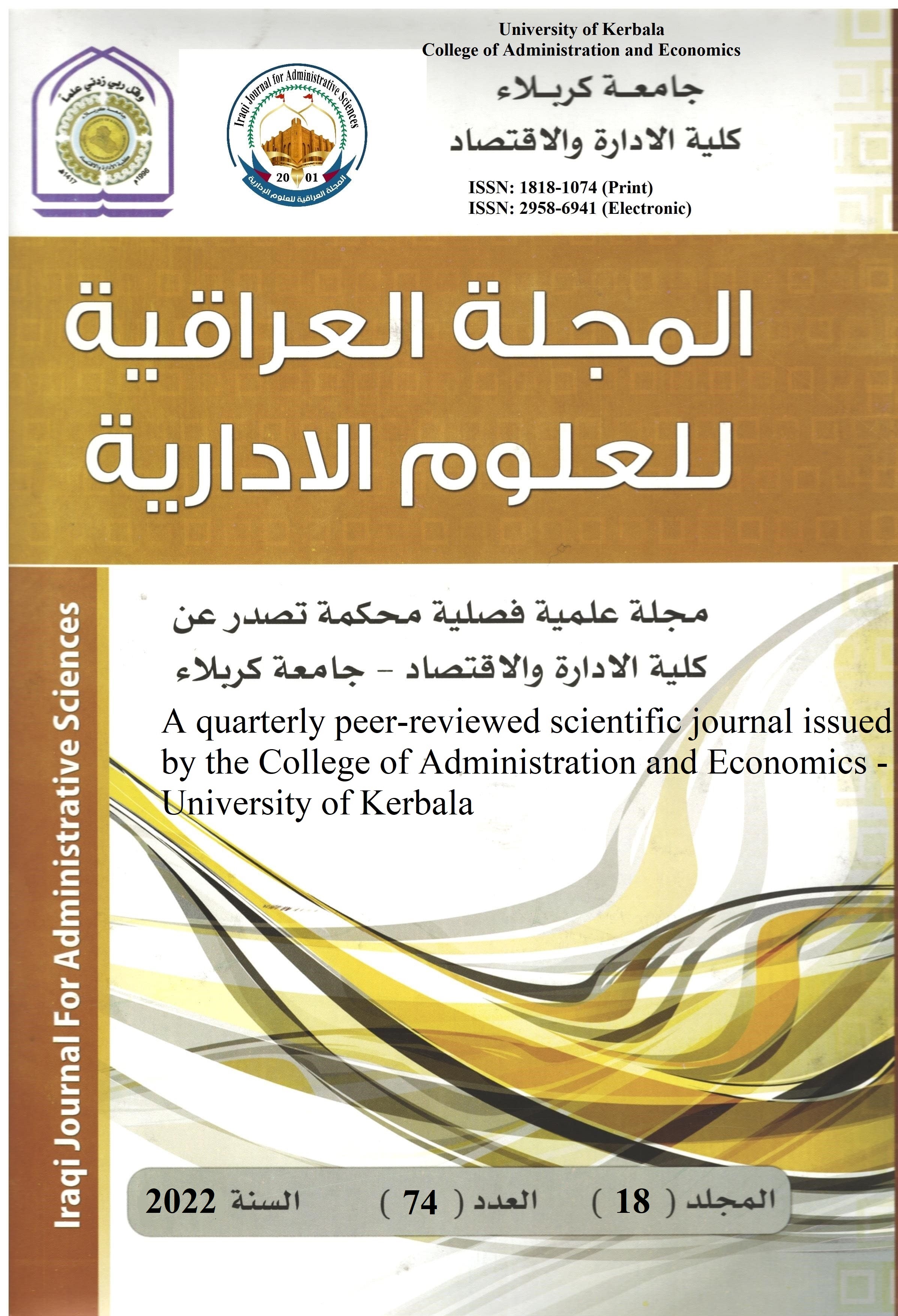Estimate Parametric Regression Models Depend on (Time-To-Event) Survival Time Distributions with Application
Keywords:
Survival Analysis, parametric regression models, Maximum likelihood estimation (MLE, prostate Cancer, Accelerated Failure Time (AFTAbstract
The aim of this study is to compare between the parametric regression models estimated according to the distributions of survival time and select the best appropriate model for the distribution of survival time and estimate its parameters. Use parametric regression models for data and determine the factors that affect the survival time of patients. The study was applied to a sample size of (120) patients with prostate cancer / Hiwa Hospital in Sulaymaniyah Governorate for a period from January 1, 2019 to November 1, 2021.
The best model was determined based on each of the criteria AIC and BIC and using the applications (Mat-lab, Stata 15.1, Easy Fit 5.6). The result show that the best model is (Weibull-AFT) and the factors (Age, PSA, Stage, metastasis) are that affect the patient's survival time.
References
Abbas, S. A., S. Subramanian, P. Ravi, S. Ramamoorthy and V. Munikrishnan (2019). An Introduction to Survival Analytics, Types, and Its Applications. Biomechanics, IntechOpen.
Alhasawi, E. (2015). Survival analysis approaches for prostate cancer, Laurentian University of Sudbury.
Bogaerts, K., A. Komárek and E. Lesaffre (2017). Survival analysis with interval-censored data: A practical approach with examples in R, SAS, and BUGS, Chapman and Hall/CRC.
Chan, Y. M. (2013). Statistical analysis and modeling of prostate cancer, University of South Florida.
Christiansson, A. (2020). Classication of survival data by comparison of survival functions: an application to prostate cancer registry data.
Cleves, M., W. Gould, W. W. Gould, R. Gutierrez and Y. Marchenko (2008). An introduction to survival analysis using Stata, Stata press.
Dey, T., A. Mukherjee and S. Chakraborty (2020). "A practical overview and reporting strategies for statistical analysis of survival studies." Chest 158(1): S39-S48.
Ekman, A. (2017). Variable selection for the Cox proportional hazards model: A simulation study comparing the stepwise, lasso and bootstrap approach.
Emmert-Streib, F. and M. Dehmer (2019). "Introduction to survival analysis in practice." Machine Learning and Knowledge Extraction 1(3): 1013-1038.
Ibrahim, J. G., M.-H. Chen, D. Sinha, J. Ibrahim and M. Chen (2001). Bayesian survival analysis, Springer.
Lee, E. T. and J. Wang (2003). Statistical methods for survival data analysis, John Wiley & Sons.
Liu, X. (2012). Survival analysis: models and applications, John Wiley & Sons.
Montaseri, M., J. Y. Charati and F. Espahbodi (2016). "Application of parametric models to a survival analysis of hemodialysis patients." Nephro-urology monthly 8(6).
Moore, D. F. (2016). Applied survival analysis using R, Springer.
Pham, M. H. (2014). "Survival Analysis-Breast Cancer." Undergraduate Journal of Mathematical Modeling: One+ Two 6(1): 4.
Qi, J. (2009). Comparison of proportional hazards and accelerated failure time models.
Salinas-Escudero, G., M. F. Carrillo-Vega, V. Granados-García, S. Martínez-Valverde, F. Toledano-Toledano and J. Garduño-Espinosa (2020). "A survival analysis of COVID-19 in the Mexican population." BMC public health 20(1): 1-8.
Stevenson, M. and I. EpiCentre (2009). "An introduction to survival analysis." EpiCentre, IVABS, Massey University.
Vittinghoff, E., D. V. Glidden, S. C. Shiboski and C. E. McCulloch (2006). "Regression methods in biostatistics: linear, logistic, survival, and repeated measures models."
Wang, P., Y. Li and C. K. Reddy (2019). "Machine learning for survival analysis: A survey." ACM Computing Surveys (CSUR) 51(6): 1-36.
Zhao, G. (2008). Nonparametric and parametric survival analysis of censored data with possible violation of method assumptions, The University of North Carolina at Greensboro.
Downloads
Published
How to Cite
Issue
Section
License
Copyright (c) 2024 Economics and Administration College - Karbala University

This work is licensed under a Creative Commons Attribution-NonCommercial-NoDerivatives 4.0 International License.
Authors retain the copyright of their papers without restrictions.




